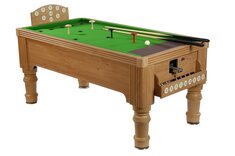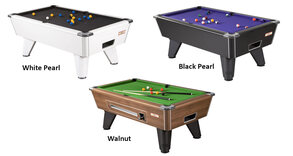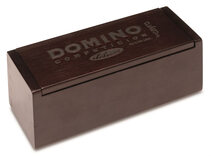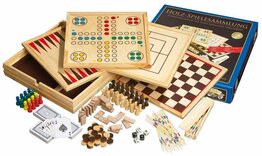Guide to Skittle ball sizes
The following information gives the size of ball typically used by leagues and clubs for the various pin sizes. The larger and heavier the ball, the easier it ploughs through the skittles which is rewarding, but the downside is that there will be a greater wear and tear on the pins and alley.
See also: Pub Skittles.
Until around 2010, the most common material for skittle balls was Lignum Vitae, the hardest and heaviest wood in existence. Unfortunately, it is now a protected wood and cannot be imported. The dwindling residual stocks of Lignum are so expensive that they are normally economically unviable to make. Other heavy woods can be used but most suffer from similar scarcity issues. Lighter hardwoods such as Beech have been used but they need to be much bigger to achieve the same weight and deteriorate much more quickly. The alternative to Lignum for most Skittle leagues are composite phenolic resin balls - which are deliberately constituted to be a similar density and feel to Lignum. Rubber balls are also available and generally a good option but they have a different feel to using Lignum or composite balls. And whereas Lignum can be turned to any size, Rubber and composite balls are only available in set sizes - normally 4 inch, 4.5 inch and 5 inch diameter.
8 inch Welsh pins
4 inch balls (rubber / composite or Lignum)
10 inch Welsh / Glamorgan pins and 10 x 4 inch Bristol pins
4.5 inch balls (rubber / composite or Lignum)
10 x 4.5 inch Bristol / Gloucester Pins
4 & 3/4 inch Lignum balls or 5 inch Lignum / composite / rubber balls#
10 x 5 inch Bristol / Gloucester Pins
4 & 7/8 inch Lignum balls or 5 inch Lignum / composite / rubber balls
12 x 6 inch Somerset / Devon Pins
5.5 or 6 inch Lignum / composite balls





































